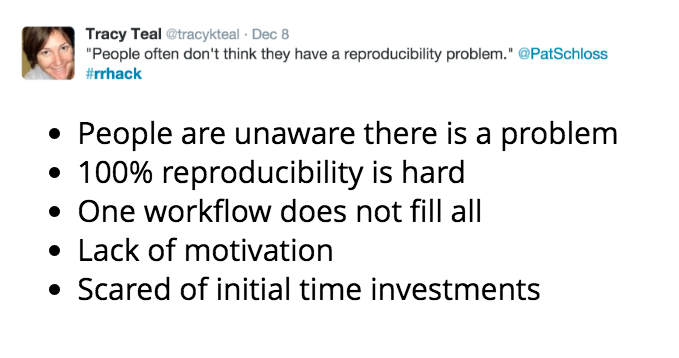Tutorial
The Importance of Reproducible Science
Last Updated: Oct 7, 2020
Authors: Megan A. Jones
Last Updated: Oct 7, 2020
Verifiability and reproducibility are among the cornerstones of the scientific process. They are what allows scientists to "stand on the shoulder of giants". Maintaining reproducibility requires that all data management, analysis, and visualization steps behind the results presented in a paper are documented and available in full detail. Reproducibility here means that someone else should either be able to obtain the same results given all the documented inputs and the published instructions for processing them, or if not, the reasons why should be apparent. From
Please view the online slide-show below which summarizes concepts taught in the Reproducible Science Curriculum.


How reproducible is your current research?